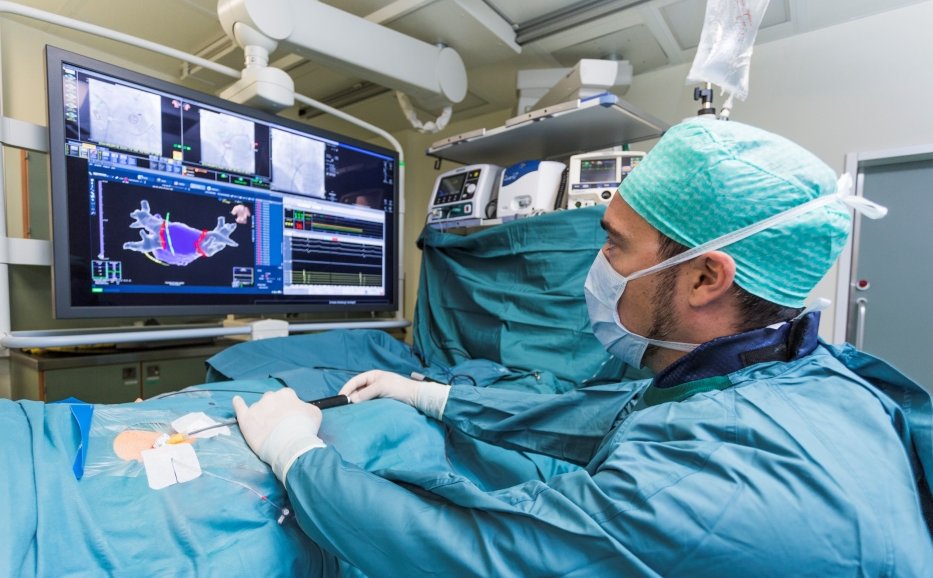![[Translate to Englisch:] Blick auf die Herzüberwachung im OP](/fileadmin/_processed_/8/6/csm_Herzchirurgie_OP_4088_8f5125cefb.jpg)
A healthy heart has a regular (rhythmic) pulse and beats between sixty and eighty times per minute. This heart rate is controlled by the heart's conduction system, resulting in a rhythmic contraction of the atria and ventricles of the heart. The frequency of the pulse can adapt to the stress to which the human body is exposed. A number of diseases can result in disorders of the conduction system and thus affect the rhythm of the heart, leading to the need for implantation of a cardiac pacemaker. A distinction is made between three different types of cardiac pacemaker: 'traditional' pacemakers, which have to be implanted if the heart rate is too low, implantable cardioverter defibrillators (ICDs), which are used to prevent ventricular fibrillation, and cardiac resynchronization therapy (CRT) pacemakers, which synchronize the steady beating of the individual chambers of the heart.

